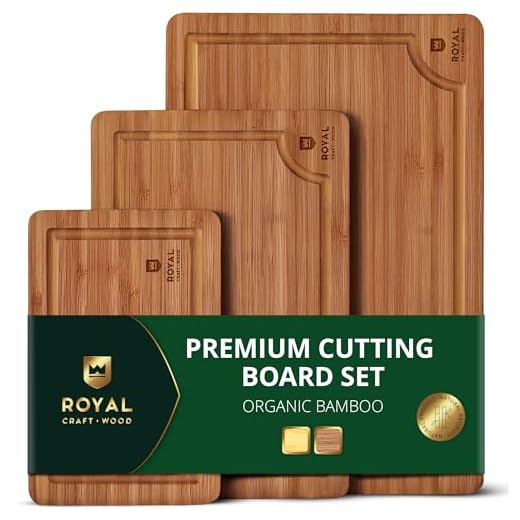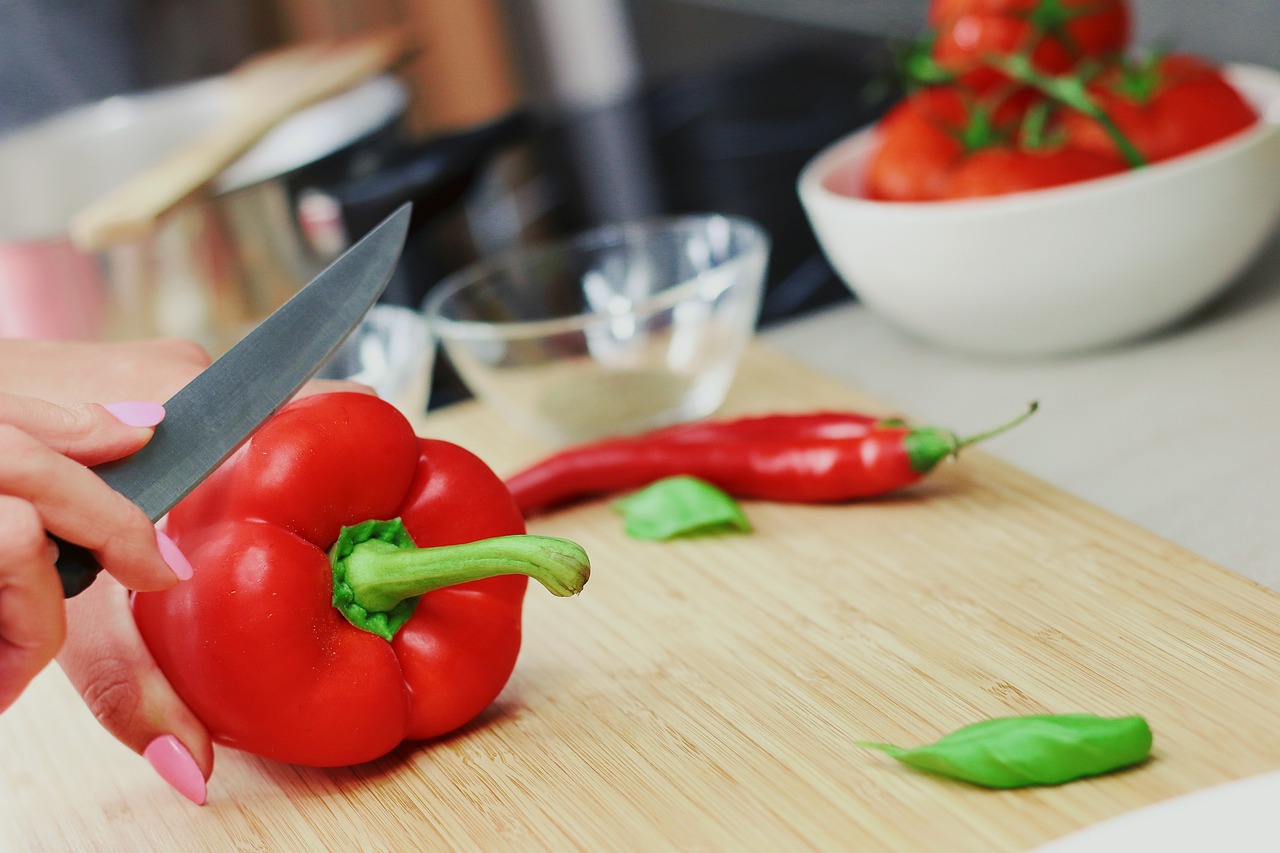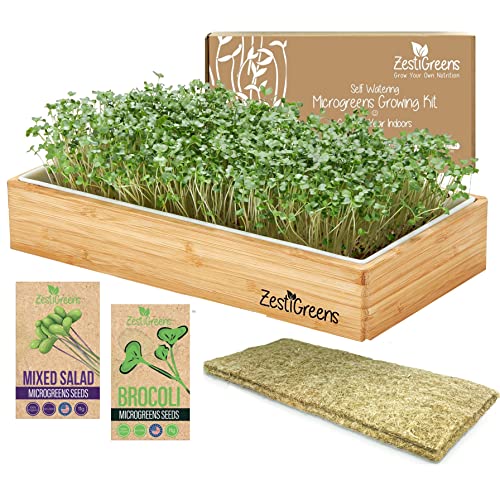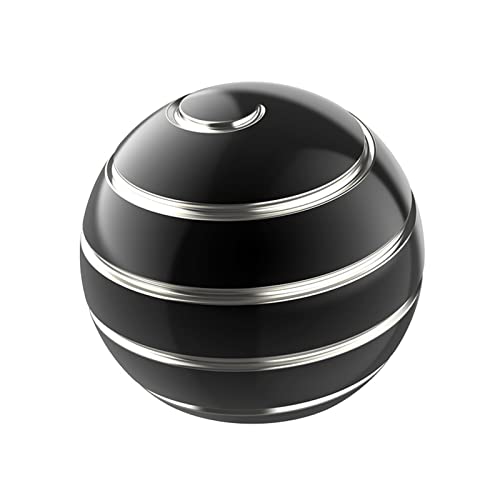Welcome to the Great Cutting Board Showdown!
Did you know the average home cook spends more than 150 hours each year cutting and chopping? That’s a lot of dicing, slicing, and julienning. But have you ever wondered whether your trusty cutting board is up to the task? In this exciting culinary clash, we’re diving deep into the bamboo vs. plastic cutting board debate to see which one earns a coveted spot in your kitchen.
Bamboo and plastic cutting boards each have their unique virtues and quirks. Choosing the right one isn’t just about utility—it’s a decision that impacts everything from food safety to the environment. Get ready to slice through the myths, dice up some solid facts, and serve them with a side of humor. We promise you’ll come away with the knowledge to make an informed choice, whether you’re preparing a Michelin-star masterpiece or a quick weeknight meal.




Bamboo vs. Wood: Discover the Ultimate Cutting Board Choice!
Material Matters: The Origin Story
The Tale of Bamboo: From Forest to Fork
Picture this: A serene bamboo forest, its tall stalks swaying like synchronized dancers in the breeze. Now, imagine taking these stalwart shoots, pressing them into sleek, elegant cutting boards that transform your kitchen routine into an eco-friendly choreographed dance. Bamboo isn’t just a sustainable choice; it grows at a rapid pace—sometimes up to three feet in just 24 hours! That’s right; bamboo is the high-fiber, high-speed grass that grazes your countertop with grace.
For those mindful of both cutting and the environment, bamboo is a renewable resource that requires minimal pesticides and fertilizers. Its natural antibacterial properties make it a hygienic choice, especially for the busy home cook. Plus, its rich, earthy hues and durability bring both functionality and style to your culinary endeavors.
Looking for a prime example to show off at your next dinner party?
This set provides the perfect combination of practicality and panache with its juicy-juice groove for catching unwanted dribbles.
Plastic’s Synthetic Symphony
Now, let’s “draw” lessons from the chemistry lab—enter plastic cutting boards. Born of brilliant synthetic engineering, plastic boards came into our kitchens riding on a wave of convenience and technological advances. Offering a palette of colors and sizes, their uniformly flat surfaces are designed to keep your cutting edge sharp and your fingers intact.
Plastic boards have a unique origin story, crafted from polymers that offer flexibility, resilience, and often boast surprising longevity despite daily use. Thanks to modern fabrication technologies, these boards are also dishwasher-safe, making clean-up a breeze, a feature sure to appeal to the rushed or multitasking cook.
Nonetheless, not all plastics are created equal. When selecting a plastic cutting board, look for those marked as “high-density polypropylene” to ensure top-tier toughness. Beware, though, the humble plastic board comes with its kryptonite: knives can leave marks that might harbor bacteria if not thoroughly cleaned.
What to Expect Next?
Bamboo’s grounding in nature and plastic’s engineered roots set the stage for an epic durability duel. Next, we’ll explore how these materials fare when put under pressure in the chapter “Durability: The Tale of Two Boards.” Stay tuned as we continue this culinary journey of chops and slices!
Durability: The Tale of Two Boards
Bamboo: The Natural Tough Guy
Imagine you’re prepping dinner, chopping through carrots and wrestling with squash. Your cutting board needs to be a steadfast ally, withstanding the pressure without batting an eye. Enter bamboo, nature’s muscleman. Bamboo cutting boards boast substantial durability because of their hardness, which makes them resistant to nicks and dings. Indeed, they’re like the strong, silent type in a Hollywood blockbuster—always ready to take the heat without a complaint.
Bamboo’s fibrous nature gives it a self-healing ability, meaning it can “bounce back” from knife marks over time. This resilience makes bamboo cutting boards a go-to for more aggressive slicing and dicing. You might be thinking, “But how durable are these really over the long haul?” Well, consider the Keechee Bamboo Cutting Boards - Sturdy & Eco-Friendly. They are lauded for maintaining their form and structure, making them a formidable choice in the cutting board lineup.
Plastic: The Resilient Underdog
Plastic cutting boards, on the other hand, are the kitchen’s equivalent of that reliable cousin named Bob. Sturdy, dependable, and never showing wear and tear till the very end. While they may not have bamboo’s organic charm, top-quality plastic boards—especially those made from high-density polypropylene—are incredibly resilient. They bend under pressure but rarely break, and they embrace heavy chopping tasks with a slip-resistant surface that holds its ground.
The beauty of plastic lies in its forgiving nature. It’s reconcilable with parents’ hectic morning routines or a family’s chaotic dinner prep. Not to mention, these boards will bravely endure the sanitizing cycle of your dishwasher, offering durability and cleanliness in one clean sweep.
Which Board Comes Out on Top?
In this tale of two boards, bamboo offers a tough natural character, while plastic champions effortless resilience. But which one truly triumphs? While bamboo may resist knife scars with its toughness, long-lasting use can eventually wear it down, albeit gracefully. Plastic may show scratches with time, but its ability to endure washing machine whirlwinds showcases a different brand of steadfastness.
Next up, we’ll shed light on another essential cutting board consideration: hygiene. As we continue our culinary odyssey, we’ll discuss how hygiene practices play a pivotal role in keeping your kitchen—and your family—safe and sound. Stay tuned for the juicy details!
Hygiene: Keeping it Clean in the Kitchen
The Porous Puzzle of Bamboo
When it comes to kitchen hygiene, the turf war between bamboo and plastic cutting boards is more heated than a chef’s skillet in mid-dinner rush. Bamboo cutting boards, with their natural grace and aesthetic, might seem like the cleaner choice thanks to their antibacterial properties. But wait! There’s a slight plot twist. Bamboo’s charm is marred by its porosity. Those tiny pores can act like unwelcome Airbnb hosts to liquid stains and odors. In other words, every juicy tomato or drippy chicken breast you slice may leave behind an uninvited guest: bacteria. To keep these surprises at bay, regular and thorough washing is non-negotiable. Plus, occasional oiling with food-grade mineral oil will help keep bamboo’s surface smooth and slightly resistant to moisture absorption.
The Slick Surface of Plastic
Meanwhile, plastic comes strutting into the hygiene debate like it owns the place. With its non-porous surface, plastic cutting boards effectively flip the porosity problem on its head. No tiny crevices here—most bacteria end up rinsed away with a good scrub or a spin in the dishwasher. But don’t let this shiny surface fool you; knife marks can become the new home for bacteria if they’re not properly addressed.
Real-world studies show that with the right care, plastic boards can be more hygienically reliable than bamboo, especially when considering their ease of cleaning post raw-meat operations. A simple yet effective kitchen tip is to rotate your plastic boards regularly and retire those looking like they’ve been through a knife fight. Enter the hero of hygiene innovation:
This set offers a balanced mix of durability and cleanliness, boasting antimicrobial properties designed to keep bacteria at bay.
Cleaning and Maintenance Tips
To ensure either board stays in top-notch condition, here’s a quick hit list of maintenance must-dos:
Hygiene is as integral to cooking as a good spice mix. As we delve deeper into the world of cutting boards, the next chapter will explore the environmental impact of your choice. Can your decision today make a better tomorrow for the planet? Let’s chop through the environmental debate coming up next!
Eco-Friendly Factor: Saving the Planet One Chop at a Time
The Green Appeal of Bamboo
When Aunt Mabel says, “Think of the children!” as she serves her famous potato salad, your cutting board choice might not be on her radar. But sustainable kitchen practices can indeed make a big difference for future generations. Enter bamboo—your kitchen’s green knight.
Next time you’re chopping up stir fry, remember: with bamboo, you’re wielding more than a cutting board—you’re holding a piece of environmental sustainability!
The Plastic Puzzle
Plastic cutting boards offer convenience at a hidden cost. They’re the flashy race car that might just underperform on the eco-test track.
Celebrating a plastic board for its ease can be offset by the underlying environmental toll. But let’s not toss every poly slip into purgatory. Some manufacturers are innovating with recycled materials or recyclable designs.
Choosing a board made from wood fibers can be a step in the right direction, offering a balance between durability and environmental awareness.
Which Board Cleaves the Eco-Critics?
It’s not just about what you’ll use the board for today, but the legacy it leaves tomorrow. Bamboo wraps itself in the green cloak of renewability, while plastic stumbles over future waste hurdles. Still, individual efforts like recycling can sharpen plastic’s eco-reputation.
Next, as we turn these boards from eco-heroes to kitchen workhorses, it’s time to weigh the financial stakes. Up next, the debate heats to a rolling boil as we tackle cost and maintenance, steering you toward the perfect culinary companion.
Cost and Maintenance: The Price of Perfection
Ah, the eternal enigma of bang for your buck—where quality meets quantity, and your wallet sits as the discerning judge. In the realm of cutting boards, bamboo and plastic each have a price tag attached, not just in purchase but in upkeep as well.
Initial Investment: Bamboo vs. Plastic
When you first stroll down the cutting board aisle—or let’s be honest, scroll through an online store—you’ll notice the price disparity between bamboo and plastic cutting boards. Bamboo, akin to haute couture, often demands a tad more from your pocket. Prices for a mid-range bamboo board can start at about $15–$30, depending on size and thickness.
In contrast, plastic boards, like that dependable plain white tee, are generally more budget-friendly. A solid plastic cutting board can set you back anywhere from $5 to $20. Lower upfront cost makes plastic an attractive option for those just testing the culinary waters or on the lookout for something easily replaceable.
The Maintenance Equation
Here’s where the plot thickens like a good gravy: maintenance. Bamboo boards, with their regal demeanor, demand a regular coat of oil—as if they’re reminding you who’s truly in charge at the dining table. Rolling some food-grade mineral oil over the surface ensures longevity, preventing cracks and keeping the board smooth and impervious to moisture. It’s a ritual, a meditative moment if you will, but hey, every relationship needs its little moments.
Plastic boards, however, are the care-free teenagers of the cutting board world. Maintenance-wise, they’re more of a “give a dam”—or dishwasher, in this case—kinda deal. Easy cleaning post-use, minimal fuss, and voilà, they’re ready for the next tomato massacre. But remember, even they need to retreat gracefully into the sunset once they’re trailing deep knife scars.
Best Value Tips
With a focus as much on initial affordability as on maintenance ease, both bamboo and plastic find ways to justify their kitchen space. It’s less about choosing a side and more about aligning with your culinary routine, be it leisurely or high-paced.
As we draw our exploration to a close, we’ve seen how both bamboo and plastic boards slice through various arenas—from durability to eco-friendliness—and how those factors impact the dollars spent. So, which board emerges victorious in this kitchen clash? Get ready for the ultimate unraveling in the next section, where we’ll make the final cut.
The Final Cut: Which Board Makes the Cut?
After our culinary odyssey through the rich world of cutting boards, it’s time to face the proverbial chopping block. Bamboo, the eco-chic darling, serenades us with its sustainable origins and durability that recalls a hero’s journey. Meanwhile, plastic—with its robust resilience and modern hygiene prowess—whispers promises of longevity and minimal upkeep. Each has commendable qualities akin to a sous-chef vying for your affection.
When it comes to saving the planet, bamboo gives itself a hearty round of applause. However, plastic’s hygiene acumen winks knowingly, reassuring you it’s no mere kitchen bystander. Both options fall over their non-slip bases trying to be your perfect partner, yet there’s no denying: whether you need the high-fidelity touch of nature or sci-fi kitchen wizardry, the choice is personal.
Ultimately, neither board emerges as the absolute victor—value lies in your priorities. Perhaps this kitchen conundrum cuts deeper than anticipated, but here’s a tip: trust your gut (and your chopping hands). Have a favorite? Don your apron, grab your weapon of choice, and let your culinary adventures continue! After all, teamwork makes the dream work—or, at least dinner. Bon appétit!







Am I the only one who thinks the price difference isn’t justified? I mean, I love my Premium Bamboo set, but dang, it costs an arm and a leg compared to some solid plastic options.
You’re not alone, Joe. I’m all for quality, but sometimes you don’t have to break the bank to get a good product.
Pricing can be a factor, Joe. The balance between cost and quality is key!
‘The Final Cut’ section of the article was a bit vague for me. I wanted a clear winner between bamboo and plastic. Any recommendations for a newbie cook like me?
Thanks for your feedback, Kathy. It ultimately depends on your personal kitchen needs and preferences.
Depends on what you value more, Kathy. Hygiene? Go plastic. Looks? Bamboo all the way!
Durability-wise, I’ve always found plastic boards like the Neoflam ones hold up better over time. Bamboo looks nice, sure, but the edges start to wear out after a while, especially if you’re chopping all day like me.
I’ve noticed the same, Dave. Although, those knife marks on plastic can be a bit of an eyesore after a while.
Both materials have their strengths in terms of durability, depending on usage and care. Thanks for sharing your insights, Dave!
I’ve tried both bamboo and plastic cutting boards, and honestly, I’m leaning towards bamboo. 😍 The Royal Craft Bamboo set with that juice groove is a game-changer! No more mess when I’m slicing juicy fruits! Plus, my knives don’t get dull as quickly. Anyone else feel me?
Glad to hear you’re enjoying the Royal Craft Bamboo set! Keeping those knives sharp is always a bonus.
Totally agree, Jessica! I used to have a plastic board, and my knives looked like they were from the Stone Age after a few months 😂.
Anybody else feel the juice grooves on bamboo boards are life savers? I mean, the mess my kids make cutting watermelon is unreal!
Yes! When you have kids, every little bit helps. Juice grooves for the win!
Glad to hear the juice grooves are making a difference in your kitchen, Vince.
If you care about the planet 🌎, there’s really no contest. Bamboo is renewable and requires less energy to produce than plastic. I mean, the Keechee Bamboo boards are sturdy and eco-friendly! What’s not to love?
Preach, EcoWarrior! I switched to bamboo last year, and it’s been great knowing I’m doing my bit for the environment.
I get the eco-angle, but sometimes practicality wins. Plastic boards are so much easier to clean! 😅
I wish the article had touched more on the weight of these boards! My Toptier Wood Fiber board is a beast to move around 😅. What’s everyone else’s experience?
Oh, I totally know what you mean, Lucy! I use my boards as part of my upper body workout 😂.
Great feedback, Lucy. We’ll consider mentioning board weight in future articles.
Honestly, I think the hygiene section of the article was spot on. 🤔 Plastic boards might be easier to sanitize because they’re dishwasher-safe, like the Farberware ones. Bamboo boards are beautiful, but are they really as hygienic?
I’ve heard that bamboo is naturally antimicrobial. But I guess it’s still important to wash them properly!
Plastic is the way to go if you’re super concerned about germs. Just chuck ’em in the dishwasher! 👍
Great points, everyone! Both materials have their pros and cons when it comes to hygiene.
I’ve been using a Farberware plastic board for a year now. It’s perfect for the dishwasher, but I miss the aesthetics of bamboo. Can any board have it all? 🥴
We understand your dilemma, Sarah. Finding the right balance can be tricky!
I know, right? It’s like choosing between function and beauty. Why can’t they just make a hybrid? 😂